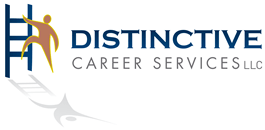
Including accomplishments in your resume is one of the most important improvements you can make when updating your resume.
But, resume accomplishments alone are not enough. To be really effective, your resume achievements should go one step further and emphasize the results of your accomplishments. In other words, you must quantify your resume. Consider the difference:
- Grew customer accounts and increased sales.
vs
- Won 35 new accounts with Fortune 500 customers, expanding the customer base 43% and increasing sales $5.4 million.
Quantifying resume achievements and using metrics to illustrate the results and value you deliver to your employers doesn’t just add punch to your resume; it helps make it more credible and meaningful. Proven results of past achievements and performance, usually included as resume bullet points, are the best indicator a prospective employer has of your potential to produce similar results for their company.
However, many people find it challenging to figure out ways to use numbers to quantify resume accomplishments. If this is true of you, this blog post will prove invaluable. Read on for specific ideas and example resume bullet points with quantified achievements that will help you quantify your own resume.
Using Numbers to Describe Your Resume Accomplishments: The Options
There are four options when you are thinking about quantifying your resume accomplishments.
1) Whole Number Metrics (sums or totals)
For example, revenue expressed as a dollar figure, profit expressed as a dollar figure, total costs as a dollar figure, the number of transactions, the number of transactions of goal completions, the number of transactions of customers, etc.
Here is an example of how you would quantify your resume results using whole numbers:
- Generated $2 million revenue in FY 2023 by strategically acquiring and expanding key accounts, leading to a $500,000 increase in overall company profit.
2) Percentages
For example, % of increase, % of decrease, % of satisfied customers, % of conversions, % of sales growth, etc.
Here is an example of how to quantify your resume results using percentages:
- Enhanced customer satisfaction 25% within a six-month period by implementing a new customer feedback system and resolving identified areas of concern, leading to subsequent 15% increase in customer retention rates.
3) Averages
Such as average customer satisfaction rating, average sales per customer, average days to a sales win, etc.
Here is a sample accomplishment resume bullet using averages:
- Maintained average customer satisfaction rating of 4.7/5 through proactive customer engagement and swift resolution of any issues, contributing to a 20% increase in repeat business.
4) Ratios
Ratios are a way for comparing numbers and are often used to quantity productivity in your resume, for example total sales / total hours spent, sales opportunities / closed sales, or number of leads generated / ad spend.
Here is a sample resume achievement bullet using ratios:
- Achieved a sales-to-hours ratio of 3:1, optimizing productivity and closing deals worth $500,000 in Q3 2023, by leveraging advanced sales techniques and prioritizing high-value prospects.
How you present your resume accomplishments can impact your job search, too. Don’t just include a list of resume bullet points without thinking them through strategically. You should also consider a couple of factors when you are deciding how to present your accomplishments.
More Tips on How to Quantify Resume Accomplishments
Drilling Down to The Results of Your Accomplishments
One of my favorite questions to ask my clients during our consultation prior to writing their resume is “So what?”
The conversation will often be similar to this:
Resume consultant: In what ways did your work benefit your employer?
Client: Well, one of the things I did was redesign and reorganize the marketing materials the sales team was using.
Resume consultant: That’s great. But so what? Why did that matter?
Client: It helped a lot. Things were so disorganized before that we could never find what we needed. Also, they old materials were so outdated.
Resume consultant: Okay, so what? What was happening as a result of this disorganization and outdated materials?
Client: Well, we were losing sales.
Resume consultant: Oh no! Tell me more. So what?
Client: It was bad. Sales had declined 25% when compared to the the year before.
Resume consultant: So you updated the marketing materials and reorganized them to make them easier to find. So what was the result?
Client: Well, sales finally stopped falling and actually increased again, a total of 45%.
Resume bullet point:
- Halted 25% sales decline and restarted growth, increasing year-over-year sales 45% as result of updating then reorganizing outdated sales collateral to improve sales team efficiency and effectiveness.
You can use this same line of questioning as you think about your own accomplishments. Continue asking yourself “so what” until you get to the bottom-line impact.
Performance Metrics & Formulas That Make It Easy to Quantify Your Resume Accomplishments
Increases and Decreases
You can use these two formulas for the metrics below that call for a percentage of increase or decrease.
- Formula for calculating an increase: (New Number – Original Number) / (Original Number) X 100
- Formula for calculating a decrease: (Original Number – New Number) / (Original Number) X 100
Sales Revenue
- Sales growth over time (look for increases)
- Achieved consistent 15% YoY sales growth over three years, translating to an increase of $2 million in revenue, by identifying and penetrating new market segments and optimizing sales strategies.
- Month-over-Month (MoM), Quarter-over-Quarter (QoQ) or Year-over-Year (YoY) revenue comparisons (expressed as whole dollars or percentages) (expressed as whole dollars or percentages)
- Delivered 25% QoQ revenue increase in Q2 2023, amounting to an additional $500,000, through implementation of promotional campaigns and enhanced customer engagement initiatives.
- Sales compared to other regions or territories
- Outperformed peers by leading the region in sales, achieving 30% more revenue than the nearest competing territory, resulting in an additional $1 million in revenue in 2023.
- Performance to Quota (expressed as whole dollars or percentages; can also use averages to show quota overachievement over a period of time)
- Surpassed sales quotas consistently, averaging 120% attainment over 12 months and generating an excess of $300,000 in revenue through strategic account management and upselling techniques.
- Number of deals closed (try presenting comparisons over time)
- Closed 50 deals in Q3 2023, a 20% increase compared to Q2, by optimizing the sales funnel and enhancing lead qualification processes, contributing to a revenue uplift of $750,000.
- Sales Win Rates (% of total sales opportunities converted to actual sales)
Formula: (# of Sales Opportunities Won / # of Opportunities Contacted) X 100
- Maintained an average win rate of 65%, converting opportunities into $2 million in sales in 2023, by refining sales pitches and leveraging competitive intelligence to address prospect concerns effectively.
- Average Sales Cycle (look for reductions)
Formula: Total # of days spent on closed deals / # of deals won
- Reduced average sales cycle 10 days through implementation of a streamlined sales process, enabling quicker deal closures and contributing to 15% increase in monthly sales revenue.
- Lead Response Time (faster lead response time is better)
- Improved lead response time 30%, contacting prospects within 15 minutes of inquiry, which resulted in a 20% increase in conversion rates and generated an additional $400,000 in revenue.
- Total Pipeline Value (look for increases)
- Expanded total pipeline value 40%, adding potential revenue of $3 million through proactive prospecting, strategic partnership development, and enhancement of lead generation initiatives.
More Quantifying Resume Examples: Revenue Increases
- Surpassed annual sales targets 35%, generating over $1.2 million in revenue in 2022 by leveraging strategic business development techniques and cultivating relationships with key industry stakeholders.
- Increased market share 20% in a highly competitive sector through the implementation of innovative sales strategies, resulting in a revenue boost of $500,000 in the first quarter of 2023.
- Enhanced sales operations and reduced sales cycle by 25% through developing and implementing a streamlined sales process, leading to a $300,000 increase in quarterly revenue and improving overall sales team efficiency.
Profits
- Cost of goods sold (COGS) (look for decreases)
- Implemented strategic cost-reduction initiatives and vendor negotiations, resulting in a 15% decrease in COGS, saving the company $200,000 in production costs in 2023.
- Gross Profits = Net Sales – COGS (look for increases)
- Enhanced gross profits $300,000 in Q1 2023 by optimizing pricing strategies and reducing COGS, contributing to a healthier financial position for the company.
- Gross Profit Margin: (Gross Profit / Net Sales) X 100 (look for increases)
- Increased gross profit margin 10 percentage points to 50% in 2023 through strategic pricing adjustments and cost-efficient production methods, optimizing overall profitability.
- Return on Investment (ROI)
Formula: (Revenue Gained from Investment – Cost of Investment) / (Cost of Investment) X 100
- Delivered 25% ROI on marketing investments by implementing data-driven campaigns and optimizing ad spend, generating additional $500,000 in revenue.
- Net Profits = Total Revenue – Total Expenses (look for increases)
- Boosted net profits $400,000 in FY 2023 through revenue enhancement and expense reduction strategies, improving the company’s overall financial health.
- Net Profit Margin = (Net Profit / Sales) X 100 (look for increases – note, if net profits have increased it may be a result of reduced expenses or increased selling prices)
- Achieved 5% increase in net profit margin by implementing cost-control measures and optimizing pricing strategies, leading to a more profitable operation with a net profit margin of 20% in 2023.
- EBITDA (Earnings Before Interest, Taxes, Depreciation, & Amortization) = Revenue – Expenses Excluding Interest, Tax, Depreciation & Amortization (look for increases)
- Elevated EBITDA $1 million in 2023 by driving revenue growth and maintaining operational efficiency, excluding interest, tax, depreciation, and amortization.
Operational / Cash Flow
- Net Cash Flow: Total Cash Inflows – Total Cash Outflows (higher numbers are better)
- Implemented stringent cash management strategies, leading to a 20% increase in net cash flow, amounting to an additional $1 million in available cash in 2023.
- Total Cash Flow = Cash from Operating Activities + Cash from Financial Activities + Cash from Investing Activities (look for increases)
- Enhanced total cash flow $2 million in FY 2023 through optimizing operating, financial, and investing activities, strengthening the company’s liquidity position.
- Operating Cash Flow = (Net Income + Depreciation and Other Non-Cash Expenses) – Increase in Working Capital (look for increases)
- Boosted operating cash flow 15%, or $750,000, in Q2 2023 by improving net income and efficiently managing non-cash expenses and working capital.
- Days Sales Outstanding (DSO) (lower numbers are better)
Formula: (Total Accounts Receivables / # of Total Credit Sales) X Days in Period
- Reduced DSO 5 days through the implementation of stringent credit control measures, ensuring quicker realization of receivables and improving cash flow.
- Debt-to-Equity Ratio = Total Liabilities / Shareholders’ Equity
– Higher ratios represent high levels of financing by borrowing and are riskier; lower ratios indicate a lower amount of financing by lenders (but, not all debt is bad; sometimes debt can help expand a business)
– Compare debt-to-equity ratio against industry averages
- Maintained healthy debt-to-equity ratio of 0.5, well below the industry average, by optimizing the capital structure and reducing reliance on borrowed funds.
- Inventory Turnover = Cost of Goods Sold / Average Inventory
– High inventory turnover means goods are selling quickly (higher efficiency)
– Low turnover means less demand for products and weaker sales
- Increased inventory turnover to 8 times per year through enhanced demand forecasting and inventory management, indicating higher efficiency and quicker sales of goods.
- Accounts Receivables Turnover =
Formula: Step 1. (Beginning Value + Ending Value) / 2 = Average AR
Step 2. (Net Credit Sales / Average AR)
Note: The AR Turnover Ratio indicates the efficiency with which a company collects on receivables. A high ratio generally indicates more efficiency in collecting on debts.
- Achieved a high accounts receivables turnover ratio of 10, indicating efficient collection practices, by implementing proactive and stringent receivables management strategies.
- Return on Equity (ROE) = Net Income / Shareholder Equity (net income is bottom-line profit before common stock dividends are paid and shareholder equity is assets minus liabilities on a balance sheet)
– Indicates how efficient a company is at managing money shareholders have contributed; higher #s are better
– Try making comparisons to competitors and the overall market; also comparisons over time
- Delivered robust 20% ROE by effectively utilizing shareholder equity to generate a net income of $2 million, outperforming industry competitors.
- Return on Assets (ROA) = Earnings before interest and taxes (EBIT) / company’s total assets
– higher ROA indicates efficiency at managing the balance sheet to generate profits
- Attained 12% ROA by optimizing asset utilization to generate profits, showcasing efficient management of the company’s balance sheet.
- Order lead time = Time Shipped/Delivered – Time Order Placed (look for decreases)
- Reduced order lead time 30% through the optimization of order processing and delivery systems, enhancing customer satisfaction and operational efficiency.
Customers
- Total # of customers
- Expanded customer base by acquiring 2,000 new clients in 2023 through targeted marketing campaigns and strategic partnerships, contributing to a 25% increase in total revenue.
- Average customer revenue = Total Revenue / Total Customers (look for increases)
- Enhanced average customer revenue 15%, reaching $1,200 per customer in Q2 2023, by implementing upselling strategies and personalized product recommendations.
- Customer retention rate (CRR) (higher numbers are better)
Formula: (Current # of Customers at end of time period – # of Customers gained in that time period) / (# of Customers at Beginning Period) X 100
- Increased customer retention rate to 90% by improving product quality and customer service responsiveness, resulting in higher customer loyalty and recurring revenue streams.
- Customer Churn Rate (inverse of CRR and lower is better)
Formula: Number of Customers Lost in a Given Period / Number of Customers at the Start of the Period
- Reduced customer churn rate to 2% by implementing proactive customer engagement strategies and addressing customer concerns promptly, preserving revenue and market share.
- Repeat Customer Rate = Total # of return customers / Total # of customers
- Achieved 70% repeat customer rate through the introduction of a loyalty program and enhanced customer experience, driving consistent revenue growth.
- Customer Lifetime Value (CLV) = (Average Order Value x Repeat Purchase Rate) – Customer Acquisition Cost
– higher CLV might indicate higher per-customer sales, improved loyalty, or improved satisfaction
- Raised Customer Lifetime Value 30%, reaching $3,000, by optimizing order values and purchase frequency while minimizing acquisition costs, indicating improved customer loyalty and satisfaction.
- Net Promoter Score = % of customer likely to recommend your company to others (must get this from a survey)
- Attained a Net Promoter Score of 75 by enhancing customer satisfaction and experience, reflecting a high likelihood of customers recommending our services.
- Customer support tickets (# of new tickets, # of resolved tickets, average resolution time – look for improvements)
- Resolved 95% of 1,000 customer support tickets within 24 hours through the implementation of an efficient ticketing system and enhanced support protocols, improving customer satisfaction.
- Customer satisfaction score
- Attained customer satisfaction score of 4.8/5 by consistently providing high-quality products and resolving customer inquiries and issues promptly and effectively.
- Customer complaints (looking for decreases)
- Decreased customer complaints 40% by implementing stringent quality control measures and proactive customer service initiatives, leading to enhanced brand reputation.
Marketing
- Conversion rate = # of leads / # of purchasers
- Elevated conversion rates 10% through the refinement of lead qualification processes and enhancement of user experience, resulting in a significant boost in sales.
- Incremental Sales = Total Sales – Expected Sales w/out Marketing Campaign (performance of marketing campaign)
- Generated $500,000 in incremental sales by orchestrating a highly targeted marketing campaign, surpassing expected sales without the campaign by 25%.
- Cost of Customer Acquisition = Total $ spent / Total # of customers acquired (look for decreases)
- Slashed customer acquisition costs 30%, spending an average of $100 per new customer, by optimizing ad spend and improving targeting precision.
- Social Media Followers
- Amplified social media following by 20,000 people by implementing engaging content strategies and consistent brand messaging across all platforms.
- Volume of Web Traffic (and volume of web traffic per source)
- Grew web traffic 50%, attracting 100,000 monthly visitors, by leveraging SEO best practices and diversifying traffic sources through strategic digital marketing initiatives.
- Return on Ad Spend (ROAS)
- Maximized ROAS to 400% by meticulously analyzing ad performance data and reallocating budget to high-performing campaigns, optimizing overall advertising effectiveness.
- Total # of inbound leads and Inbound leads by channel
- Captured 2,000 inbound leads monthly, with 500 originating from organic search, by developing high-quality content and optimizing landing pages for conversions.
- Total # of new qualified opportunities
- Uncovered 150 new qualified opportunities through proactive outreach and effective lead nurturing strategies, expanding the sales pipeline and potential revenue.
- Opportunity to order %
- Strengthened opportunity-to-order percentage to 75% by refining sales pitches and addressing prospect concerns effectively, leading to increased order volumes.
- Average order value
- Lifted average order value 20%, reaching $150 per order, by implementing strategic upselling and cross-selling initiatives.
- Average upsell value or average upsell %
- Increased average upsell value 15%, achieving $150 in additional sales per transaction, by offering complementary products and services.
- Cost per lead
- Reduced cost per lead to $20 by optimizing ad placements and improving targeting accuracy, ensuring more efficient use of the marketing budget.
- Social program ROI
- Delivered 300% ROI on social programs by designing and executing campaigns that resonate with the target audience, leading to increased engagement and conversions.
Human Resources
- Employee Turnover Rate = # of workers who left / total # of employees
– compare against industry benchmarks and look for decreases
- Mitigated employee turnover rate 15%, maintaining a rate 10% below industry average, through implementing employee engagement initiatives and enhanced workplace culture.
- Cost Per Hire = Recruiting expenses (internal & external) / Successful hires
- Lowered cost per hire 25%, averaging $2,000 per successful recruit, by optimizing recruitment channels and improving internal processes.
- Knowledge achieved with training (requires pre- and post-tests)
- Strengthened employee proficiency levels 30% post-training, as evidenced by pre- and post-training assessments, by developing and implementing comprehensive training programs.
- Internal promotions vs. external hires
- Fostered internal talent development, with 60% of open positions filled through internal promotions, by implementing robust employee development and succession planning programs.
- Average Time to Fill = Total Number of Days of Open Jobs / Total Number of Jobs Open
- Reduced average time to fill open positions 10 days, achieving a 30-day average, by streamlining recruitment processes and leveraging efficient sourcing strategies.
- Hires to Goal = Total New Hires / Hiring Goal
- Surpassed HR hiring goals 20%, recruiting a total of 120 new employees, through effective talent acquisition strategies and enhanced employer branding.
- Overtime per employee = Total hours overtime / number of employees
- Minimized overtime per employee 3 hours weekly through the implementation of efficient work schedules and optimized task allocation, promoting work-life balance.
- Employee Absence Rate
- Reduced employee absence rate 40% by fostering a positive work environment and implementing a comprehensive employee wellness program, leading to improved productivity.
Project Management
- On-time completion %
- Maintained 98% on-time completion rate for all assigned projects by implementing rigorous project management protocols and ensuring effective team collaboration, leading to enhanced client satisfaction.
- Budget variance (planned vs actual)
- Optimized resource allocation and controlled expenses, achieving a 10% favorable budget variance and saving $200,000 on project costs without compromising on quality.
- Project schedule variance
- Lowered project schedule variance to less than 1%, ensuring 99% of projects were delivered according to the planned timeline by enforcing strict schedule adherence and proactive resolution of potential delays.
Efficiency & Productivity
- Total # of products produced per (time frame)
- Accelerated production processes, achieving a total output of 10,000 units per month by implementing lean manufacturing principles and optimizing workflow.
- Amount of time to complete a task
- Slashed task completion time 25%, enabling the completion of tasks in an average of 3 hours, through the introduction of efficient work methodologies and automation.
- Average Employee Productivity = Total Revenue / Total # of Employees
- Boosted average employee productivity to $150,000 in revenue per employee by fostering a high-performance culture and implementing advanced training programs.
- Utilization Rate = (Total weekly billable hours logged / Total weekly hours logged) x 100
- Enhanced utilization rate to 90% by optimizing employee schedules and improving project allocation, maximizing billable hours and revenue generation.
- Amount of output (quantity, $ value, or volume) / # of hours per time period
- Increased output to $5,000 in value per hour by refining operational processes and leveraging high-efficiency production techniques, optimizing overall productivity.
- Throughput = overall rate of production (of a line, a plant, a machine, etc.)
- Elevated plant throughput 20%, maintaining a consistent production rate of 200 units per hour, by optimizing line setups and minimizing bottlenecks.
- Machine downtime rates
- Reduced machine downtime rates 90% through the implementation of predictive maintenance strategies and prompt resolution of technical issues, ensuring uninterrupted production.
- Cycle time = average time to produce a product
- Decreased average cycle time to 2 hours per product by streamlining production processes and eliminating non-value-added activities, enhancing production efficiency.
- First Pass Yield = percentage of products manufactured to specs without being scrapped or requiring rework
- Achieved 99% first pass yield by enforcing stringent quality control measures and continuous improvement initiatives, minimizing scrap and rework requirements.
Final Thoughts: How To Quantify Resume Accomplishments
Quantifying your resume accomplishments is a pivotal step in showcasing your professional value. It allows prospective employers and hiring managers to visualize your impact and understand the tangible results you can bring to their organization.
How you present your accomplishments can significantly impact your job search. Strategically think through your resume bullet points, ensuring they are clear, concise, and relevant. Tailor them to align with the job requirements and consider the best way to tell the story of your accomplishments, making them relevant to your target reader.
Use performance metrics and formulas to illustrate increases, decreases, sales growth, and other relevant aspects. This approach allows for a more nuanced representation of your accomplishments, highlighting your contribution to organizational growth and success.
Also, keep in mind that your resume is a living document. Regularly review and update your resume to include new achievements and remove outdated or less impactful ones. This ensures your resume remains current, relevant, and reflective of your evolving professional trajectory.
Remember, the goal is to present a well-rounded picture of your capabilities and contributions, allowing employers to accurately assess your fit for the role. By effectively quantifying your accomplishments, you validate your skills and experiences and position yourself as a valuable asset to potential employers, increasing your chances of landing your dream job.
Frequently Asked Questions
What are resume accomplishments and why are they important?
Resume accomplishments are achievements you’ve made in your previous roles that demonstrate your skills and value to an employer. They are important because they provide evidence of your abilities and show potential employers what you could bring to their company.
How can I quantify my resume accomplishments?
You can quantify your resume accomplishments by using whole number metrics, percentages, averages, and ratios. These can help to illustrate the impact and value of your accomplishments in a clear and measurable way.
What are some examples of how to quantify resume accomplishments?
Examples of quantifying resume accomplishments could include stating the number of new accounts you won, the percentage increase in sales you achieved, or the dollar amount by which you increased revenue.
What should I consider when presenting my accomplishments on my resume?
When presenting your accomplishments, consider any confidentiality concerns about the numbers you plan to include. Also, think about the best way to tell the story of your accomplishment in a way that is relevant to your target reader.
How can I determine the impact of my accomplishments?
To determine the impact of your accomplishments, keep asking yourself “so what?” until you get to the bottom-line impact. This will help you to understand the true value of your accomplishments and how they benefited your employer.
How can I use performance metrics to quantify my resume accomplishments?
You can use performance metrics such as sales revenue, profits, operational/cash flow, customer metrics, marketing metrics, human resources metrics, and project management metrics to quantify your resume accomplishments. These metrics can help to illustrate the impact and value of your accomplishments in a clear and measurable way.









